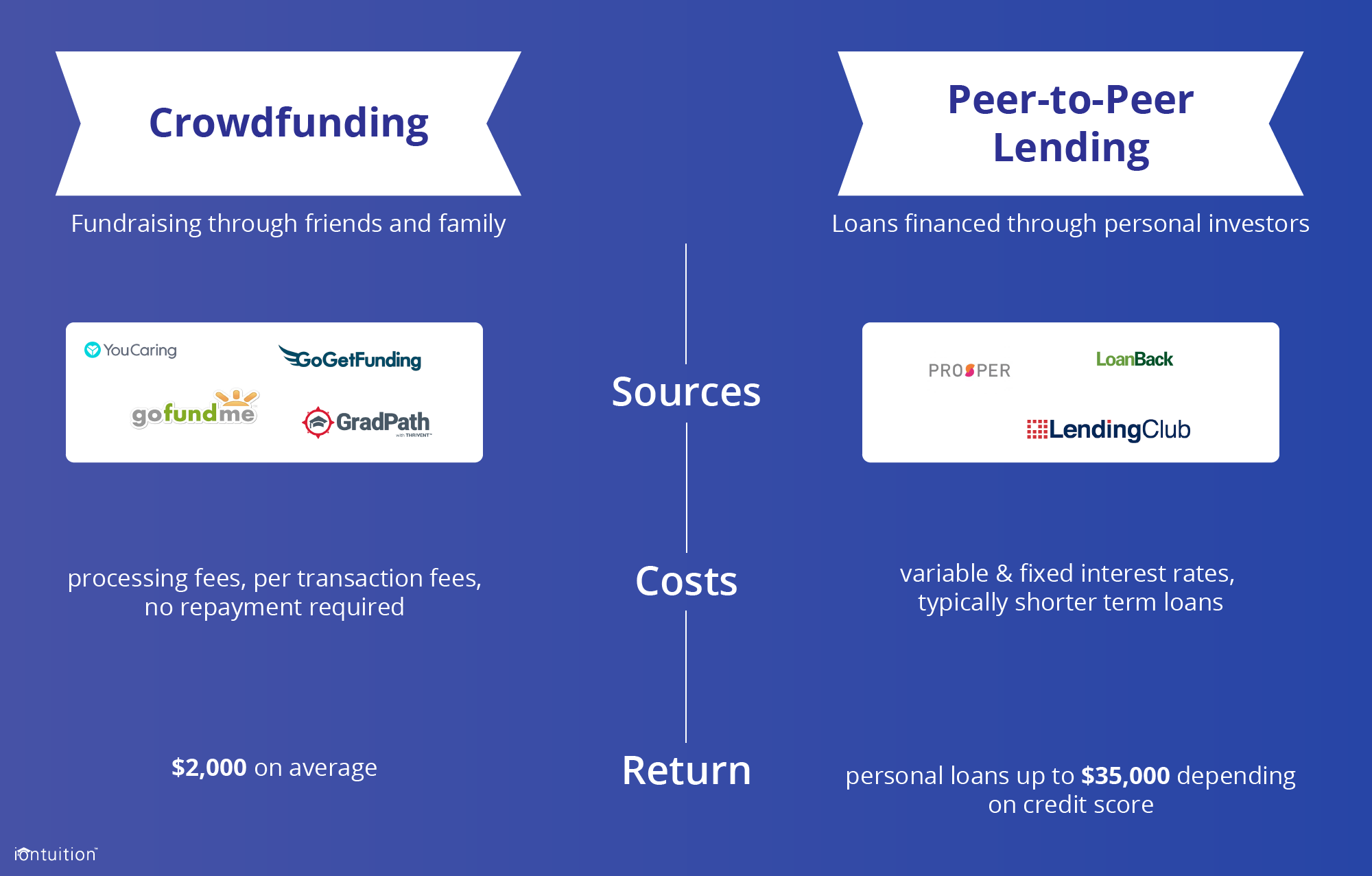College tuition has increased 163% since 1988. More American parents are saving for college than ever before. Yet, if tuition costs continue to rise at their current rate, most families will only have enough savings to cover 29% of college costs by freshman year. On average, student loans cover about 27% of the full cost of college. The remaining costs must come from savings, grants, scholarships, and friends and family.
Crowdfunding vs. Peer-to-Peer Lending
If you’re interested in receiving some money for college without required repayment, websites such as GradPath or GoFundMe are potential “crowdfunding” options. These products help you ask your social network to contribute towards your tuition.
GoFundMe raised over $20 million towards college tuition in the past year alone, with the average campaign earning nearly $2,000. However, there’s little data to show if crowdfunding is practical to repeat each year. Finding 20 or 30 people to donate $50 or $100 towards your education might work once before freshman year, but it’s unlikely to be as successful on future campaigns.
Peer-to-peer lending is also an alternative. Using a personal loan through websites such as Prosper or LendingClub offer low interest rates and fixed terms. Instead of a bank or financial institution loaning you the money, your funds come from real people investing in “micro loans” through those websites. It’s slightly more wholesome to borrow from regular people lending money with the expectation they’ll be paid back with interest. And, if you borrow from people you know, your interest rate is much more reasonable. The downside to peer-to-peer lending is that the loans are often smaller with shorter repayment terms. The upside is they offer amounts comparable to private loans.

Our Advice: Diversify Your Financial Aid
Don’t depend entirely on federal student aid to pay for college. Your student loan package may not fully cover your expenses and the more loans you take out, the higher your debt will be after graduation. Remember, IonTuition is available to help borrowers manage their loans and find sustainable repayment plans.
There are multiple options beyond the funds available through FAFSA that can support you while in college. Working a part-time job is a popular way students help pay for college.
If you do choose to use crowdfunding or peer-to-peer lending remember that this should be supplemental to your primary college savings.

